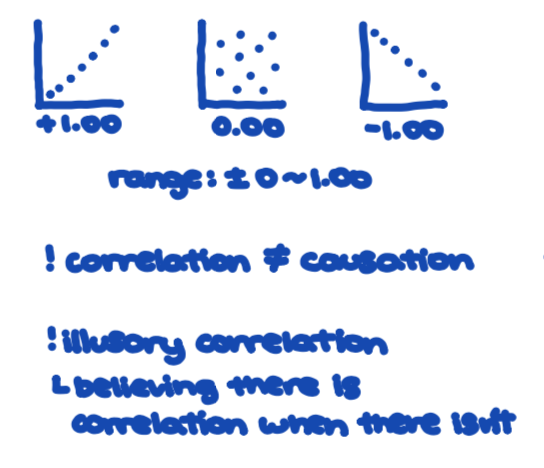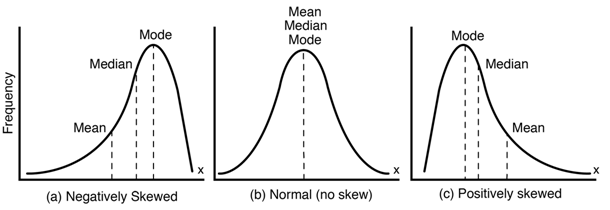Unit 1- Scientific Foundations
The first unit of AP Psychology is quite an important one. Now that there is a whole FRQ section designated for Unit 1 content, it’s crucial that all students understand the topics well. Here, you will find everything you need to know, along with some tips.
Psychology’s Schools of Thought
Although none of these terms will be your FRQ terms/questions, it is still good to know this for the MCQ portion (also the people who discovered the schools of thought are significant).
Structuralism
An Early school of thought promoted by Wundt and Titchener; used introspection to reveal the structure of the human mind.
Functionalism
An early school of thought promoted by James and influenced by Darwin; explored how mental and behavioral processes function -- how they enable the organism to adapt, survive, and flourish
Behavioralism
The view that psychology 1 should be an objective science that 2. studies behavior without reference to mental processes. Most psychologists today agree with 1. but not 2.
Behavioralism is not quite a school of thought, however, it can often be seen being grouped with it
The Seven Psychological Approaches
When memorizing the seven psychological approaches, using the hand mnemonic is very helpful.
Thumb: Psycho-analytic. Use your thumb and point back. This represents psycho-analytic as it is related to past/childhood memories/motives and the unconscious mind.
Pointer finger: Cognitive. Point to your brain using your pointer finger. This represents cognition as it describes mental activities and thinking
Middle finger: Behavioral. Use your middle finger and…flip someone/something off. You can remember this as “behavioral” because flipping someone off is a behavior
Ring finger: Humanistic. On this finger, married people wear their wedding rings. This relates to humanistic psychology
Pinky: Biological. Your pinky is the shortest finger out of all. Biological psychology is the most recently established psychological approach so there is less about biological psychology than other topics. Let the shortest finger represent the approach with least (essentially shortest) content
Palm: Social-Cultural. You use your palm to high-five someone, which is a social-cultural behavior.
Wrist: Evolutionary. Put your thumb and pinky together. If you see a thin structure pop out of your inner wrist, you have a wrist that has gone through more evolution. Let this help you remember evolutionary psychology.
Biopsychosocial Approach (will be seen often throughout the AP Psych textbook)
An integrated approach that incorporates biological, psychological, and social-cultural levels of analysis (Psychology definition given below)
Levels of Analysis
The different complementary views, from biological, to psychological, to social-cultural, for analyzing any given phenomenon
Correlational Studies
| Type of study | Pros | Cons |
|---|---|---|
| Survey | Responses from a random group | There is response bias |
| Naturalistic Observation | No manipulation | The Hawthorne Effect |
| Case Study | In-depth | Not generalizable |
Survey
A descriptive technique for obtaining the self-reported attitudes or behavior of a particular group, by questioning a representative or a random sample
Observation
A descriptive technique of observing/recording behavior in natural situations without manipulating the situation
Case Study
A descriptive technique in which a group/individual is studied in depth in hopes to reveal universal principles
Scatterplots
A graphed cluster of dots that compares values of two variables. \n  The scatterplot on the left shows a positive correlation, the middle shows no correlation, and the left shows a negative correlation.
The scatterplot on the left shows a positive correlation, the middle shows no correlation, and the left shows a negative correlation.
Slope: Direction of relationship, Scatter: strength of the correlation
Experiments
A research method in which an investigator manipulates one or more factors to observe the effect on some behavior or mental process
Operational Definitions ==FRQ CHANCE==
Independent variable, dependent variable, controlled variable, confounding variable
Have trouble memorizing the above? Remember this: A dependent variable DEPENDS on an independent variable. An independent variable is INDEPENDENT of a dependent variable. The controlled variable is the variable that stays the same. A confounding variable is any other variable
Types of Statistics
Descriptive statistics
A summary statistic that quantitatively describes or summarizes features from a collection of information and the process of using and analyzing those statistics
Inferential statistics
A form of statistical analysis that infers properties of a population
Types of Experimental Procedures
Double-blind procedure
An experimental procedure in which both the research participants and the research staff do not know whether the research participants have received the treatment or placebo
Placebo Effect
Experiment results that are caused by expectations alone. Any effect caused by the administration of inactive substances/conditions that the recipient assumes is the active agent
Random Sampling (Generalizability)
Representative sampling is good for surveys. When you randomly sample, you give everyone an equal chance of inclusion.
Sampling Bias
When the sampled group doesn’t represent all groups.
Random Assignment
Assigning participants to experimental and control groups by chance, to minimize preexisting differences between groups.
Control VS Experimental Groups
A control group is a group not exposed to the treatment, and an experimental group is a group exposed to the treatment. These groups allow researchers to confirm that the results are due to the manipulation of independent variables rather than extraneous variables.
The Scientific Method
- Observation/question
- Research topic
- Hypothesis (a testable prediction, often implied by a theory)
- Test
- Analyze data
- Report Conclusion
Theory
An explanation using an integrated set of principles that organizes observations and predicts behaviors or events
Operational Definition
A carefully worded description of the exact procedures used in a study
Replication
Repeating the essence of a research study, usuallywith different participants in different situations, to see whether the basic findings extend to other participants and circumstances
Basic Research
Pure scientific study that aims to increase the scientific knowledge base
Applied Research
Scientific study that aims to solve practical problems
Methods for Testing Theories
Descriptive method
describes behavior using correlational study methods
Correlational method
Associates different factors or variables
Experimental method
Manipulate variables to discover their effects
Standard Deviation ==FRQ+MCQ CHANCE==

A normal curve is a symmetrical, bell-shaped curve that describes the distribution of many types of data
Make sure to memorize the percentages above. These percentages of the whole curve will come up on MCQs and FRQs.

Also make sure to memorise the types of skews. On the MCQ portion, there are chances that you may get questions that ask which bell curve has, for example, a higher mode than median (answer is a negatively skewed bell curve).
Regression toward the mean
The tendency for extreme or unusual scores or events to fall back (regresses) toward the average (mean)
P Value
If the odds of results being due to chance is 5% or less (P≤0.05), its a significant difference
Ethics
There are 5 main types of ethics when practicing psychology.
- Informed Consent
Giving potential participants enough information about the studyto enable them to choose whether they wish to participate
- Protection From Harm
- Confidentiality
(Can be breached if the participant engages in criminal activity or doesn’t something illegal)
- Debriefing
Post-experimental explanation of a study, including its purpose and deceptions, to participants
- Animal Research